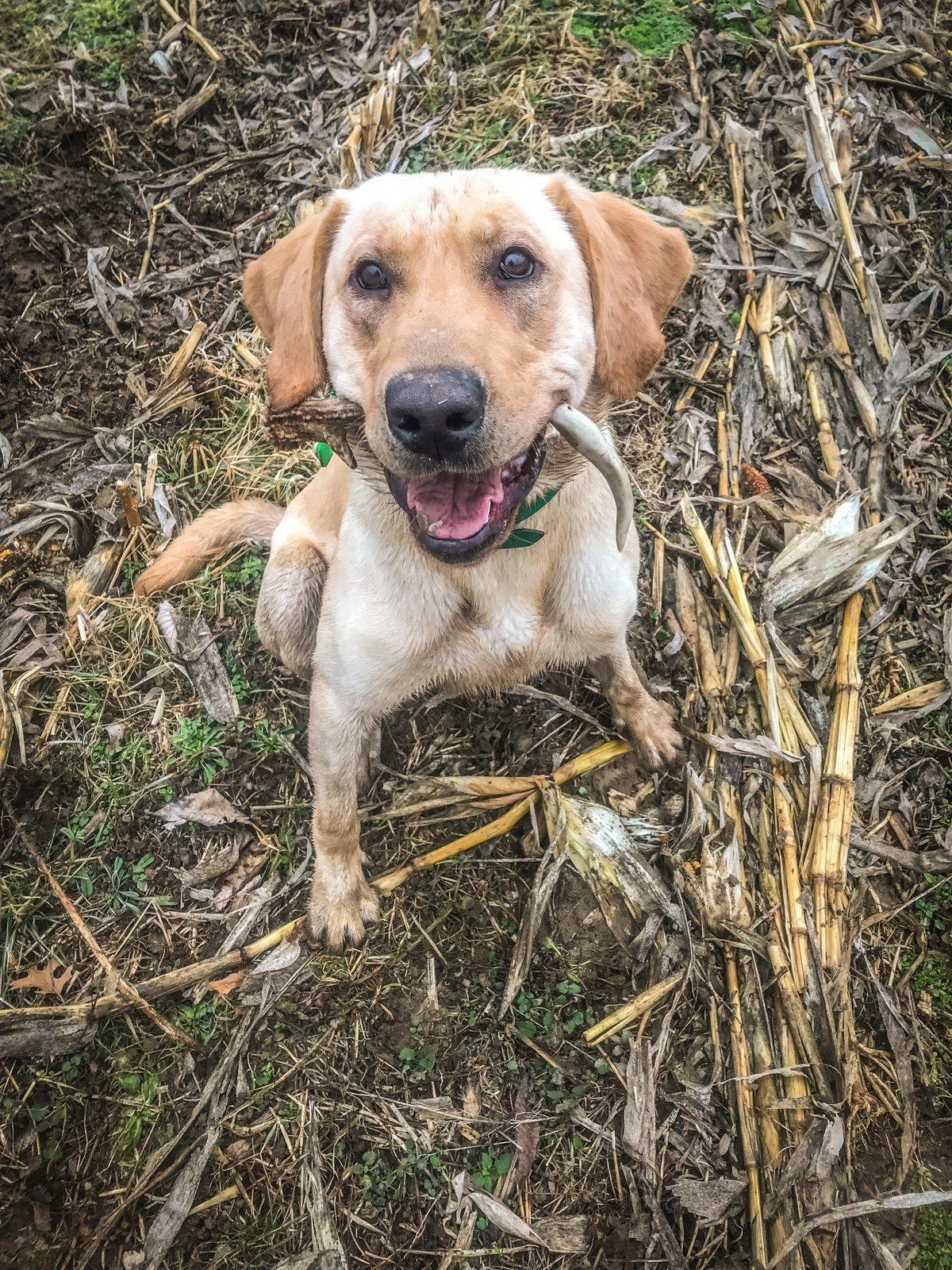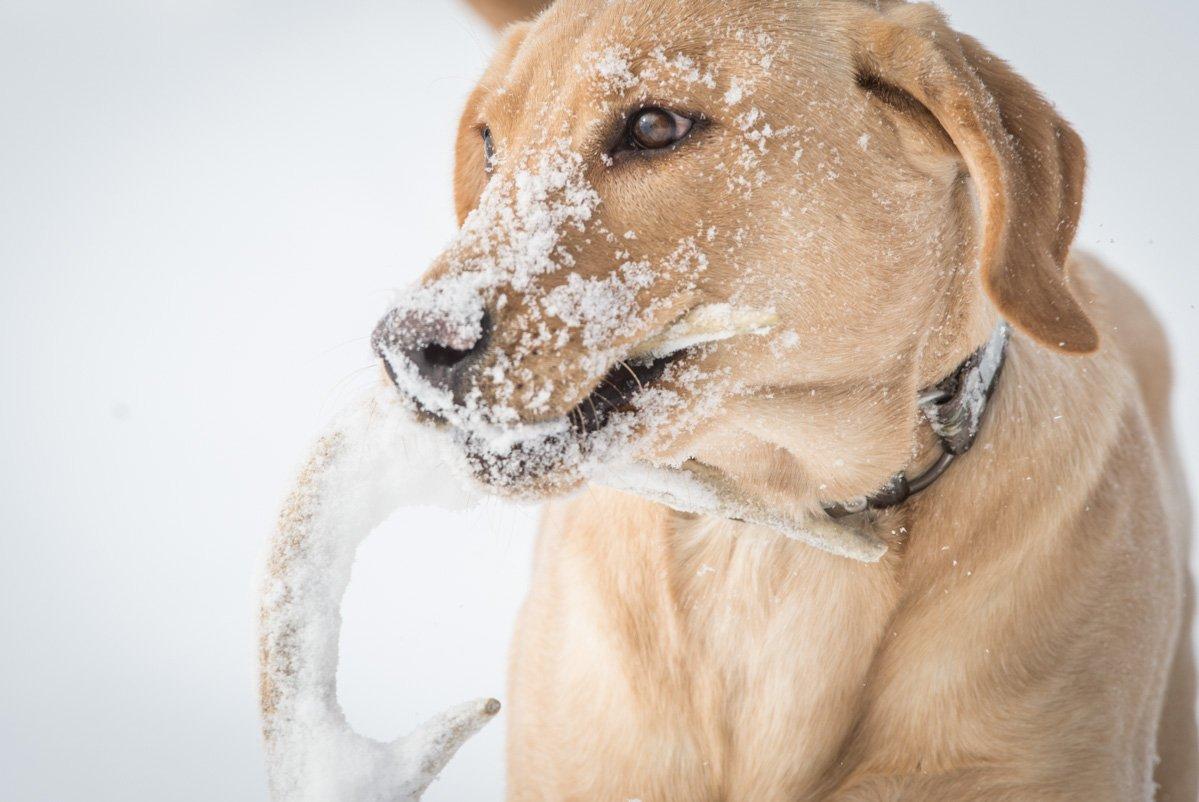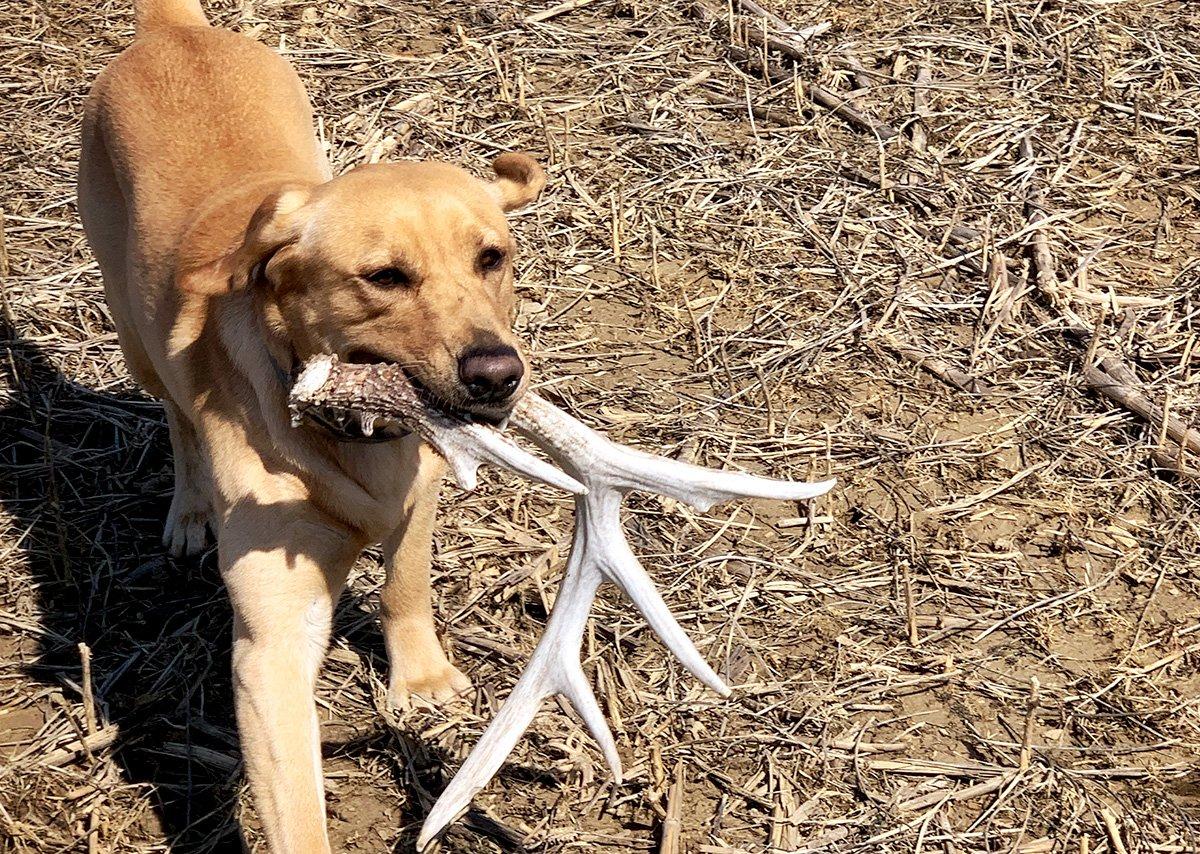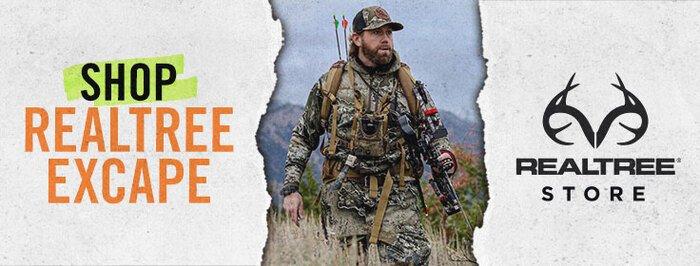The off-season is the perfect time to pick up a puppy or work with your old Lab at home to find antlers
There was a time when shed antlers were an afterthought. You picked them up on the edge of a cornfield on a late-season bird hunt, or out of a honeysuckle thicket on a spring turkey hunt. Not anymore. Shed hunting has gone mainstream with organized events, specialty gear websites, numerous articles, and how-to seminars.
But one of the best things about shed hunting might be the opportunity it provides to spend more time with your dog, and to give her a new job to do. Owning a shed dog can also extend your time in the field and help you inventory which bucks made it through the season.
But how do you train a dog to find antlers?
Choose a Dog
Let's face it, says Jeremy Moore, a professional trainer and owner of Dogbone. Peak shed hunting is, at best, a month or two long each year. It's more important to find a dog that fits with what you like to do the rest of the year than it is to pick one based on whether or not you think they will make a champion shed dog. I like a dog that is well-rounded, has a good temperament, and is eager to please its owner.
While any breed can be taught to find shed antlers, Moore is fond of retrievers because they are natural hunters and instinctually want to bring things to their owner, which eliminates one aspect required when training other breeds. Specifically, he likes dogs from United Kingdom field-trial stock.
In fact, training an older dog to find sheds can sometimes be a little easier than training a pup.
U.K. Field Trials are based more on hunting and on thinking, and dogs from those lines tend to do well with shed hunting and family life, he says. American field-trial stock can be a bit high-strung for my tastes.
But you don't have to go out and buy a puppy. Moore's first shed dog was an 8-year-old Lab that was already his main bird dog. In fact, training an older dog to find sheds can sometimes be a little easier than training a pup.
Start Slow
I like to start all my dog training with a basic obedience foundation. Without it, future training will be frustrating to both the dog and the handler. Often older dogs have that foundation already, Moore says. I still like to start antler training just like I do with pups, but the progression often moves along a bit quicker with older dogs because they already understand what we want when it comes to handling.
That training starts out simply. With pups, Moore prefers to start with a balled-up sock in an indoor hallway.
Dogs often get into the bad habit of wanting to pick something up and run with it instead of bringing it back to the handler, he says. Starting out in a hallway with the doors closed only gives the dog one option, to come back to the handler.
Once the dog is ready, Moore switches over to the Dogbone antler dummy. The foam dummy looks and feels like a real shed, but it won't poke your dog or feel uncomfortable in her mouth - two factors that can turn a dog off from picking up antlers. Once the dog has imprinted on the antler shape and is able to locate it visually in cover, Moore begins adding antler scent to the foam shed. The scent mimics the scent of a shed antler's pedicle, and it teaches dogs to use both sight and smell when searching heavy cover.
Scott and Natalie Spalding are owners of two North American Shed Dog Association titled Labs, and they enjoy both training them and working them in the field. Scott adds that while adding scent to the practice antler is important, some trainers make the mistake of using an antler sawed off a buck's skull. You lose the pedicle scent with cut offs, and that scent is replaced by a burnt odor left from the sawing process, he says. This can confuse the dogs and will work against training for the real thing.
Moore says one of the most important aspects of training a dog for any type of hunting is to understand how a dog thinks. While people often think in broad terms, from A straight to Z, dogs think in a more deliberate manner, A to B to C to D and so on, he says. Trying to take too big a step while training confuses and frustrates both dog and handler. Progress slowly on training steps, and don't be afraid to go back and work on a previous step if the dog seems to be having trouble grasping a new task. With each repetition, the dog builds memories they can fall back on. That's how they learn.
The Spaldings agree. Like Moore, their first shed dog was a 9-year-old dog that had been a waterfowler all his life. When the couple decided to start shed hunting, they purchased another Lab pup. Knowing that basic obedience was a must before serious shed training could begin, they placed their new pup with a trainer for a few weeks to work on the basics.
While the pup was at the trainer, they decided to use what they had learned from shed training DVDs and from noted trainer Tom Dokken to work with their older dog. If you're looking for a puppy, Scott recommends concentrating on dogs from good hunting stock rather than specific shed dog lines.
The dogs use the same techniques shed hunting that they would use for upland or waterfowl hunting, he says. The thing you want to look for in a pup is the drive to hunt. The antler thing can be taught, but the drive has to be there first.
Hunt the Right Spots
Both Moore and the Spaldings agree that, for dogs to be successful at finding antlers, they have to be looking where there are antlers. That means concentrating on food sources and bedding cover used by late-season deer. Just because a farm holds lots of bucks in the early season and during the rut doesn't mean it will hold deer while the bucks are shedding their antlers.
I wasted a lot time in my first year shed hunting, Natalie says. We were looking in the places where we had traditionally seen deer while hunting, but that wasn't the area they were in during the late season when they dropped their antlers.
Once they started concentrating on late-season deer hangouts, their success increased quickly.
For me, it's all about the food sources when looking for sheds, Moore adds. I start at food sources and work back to bedding cover. Bucks, especially northern bucks in cold climates, can't afford to expend a lot of energy in late winter as they recuperate from the rut. They will spend the bulk of their time in a very small area, often bedding as close as 60 to 80 yards from the food source. This concentrates the shed antlers in a small area, and that's where we want the dog searching.
Like Moore, the Spaldings prefer to shed hunt on crop land and other food sources in the late season. I use onX Hunt to look at the property before we start hunting, Natalie says. I find the likely food sources, look for heavy bedding cover nearby, then look at the wind direction so that we can hunt into the breeze, increasing the dog's chance of scenting a nearby shed.
The Spaldings like to shed hunt anytime their busy schedule allows, but given their choice, they would pick a cool, overcast morning, after any frost has burned off.
Cool mornings let the dogs work without getting overheated, and scent conditions are optimal. But don't discount evening shed hunts, either. The sinking thermals sometimes hold the scent close to the ground, making it easier for the dogs to pick up, Natalie says.
While well-trained dogs rarely need correction, Natalie likes to equip and work her dogs with a training collar like the Sportdog WetlandHunter 425 in Realtree Max5.
I don't use it for training, but more for safety, she says. We sometimes shed hunt near roadways or around sinkholes or other dangers, and the collar gives me a little more peace of mind that I can get my dogs' attention and quickly stop them.
Whether you get a new dedicated shed hunting pup or work with your existing couch potato, give training for shed hunting a try. It's inexpensive (Scott says you can get everything you need to train a dog for around $100), it gets you out of the house during a time when not much is happening in the hunting world, you get a better idea what bucks in your area might have made it through the season, and it's fun for both you and your dog.
Who knows? You might even come to enjoy searching for sheds even more than you do hunting the bucks that dropped them.
Don't Miss: How to Shed Hunt
Check out more stories, videos and educational how-to's on deer hunting.










